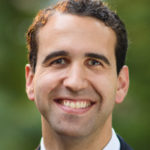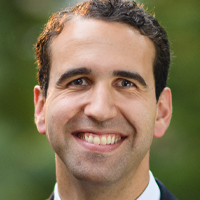
In July, Winston Blackmore and James Oler were convicted of polygamy. These men are former leaders of a fundamentalist Mormon community in British Columbia. James Oler is married to five women. Winston Blackmore has at least 24 wives (and more than 145 children).
I expect that most people applaud these convictions, especially if the lifestyle of these men is harmful. In 2011, the Supreme Court of British Columbia upheld the law banning polygamy because of the harm that polygamy poses “to women, to children, to society and to the institution of monogamous marriage.” Today, Winston Blackmore will ask the court that tried him to declare his conviction unconstitutional. Evidence of the harm described in the 2011 ruling on polygamy might sink any argument by Blackmore that the conviction is an unjustified limitation of his religious freedom under the Charter.
The convictions of Blackmore and Oler raise an important question: why is polygamy a crime in all cases? If three or more adults openly and freely form a romantic unit, why are they excluded from civil marriage? Marriage, under Canadian law, is a union of only two persons.
Truth be told, romantic units of three or more are not protesting in front of Parliament for the law to recognize their relationships as marriages — for now. Today there may be no lineup of romantic triads (or “throuples”) asking for marriage, but that may change. At one time, the idea that same-sex relationships might be recognized as marriages also seemed far-fetched.
A recent study suggests that up to 72,000 Canadians are in polyamorous relationships — which can be broadly defined as unmarried romantic units of three or more — and that the number is growing. These relationships raise distinct legal questions. John-Paul Boyd, a lawyer and the study’s author, notes that “almost all of Canada’s most important social institutions” — like the Canada Pension Plan and Old Age Security — are “predicated on the assumption that adult relationships come only in pairs.” The spousal benefits that flow from these institutions are available to married couples or couples in “marriage-like” relationships (common-law marriages), but not to people in polyamorous relationships.
The upshot is this: sooner or later, there will be constitutional lawsuits challenging the exclusion of consensual adult polyamory from civil marriage and spousal benefits conferred by the state. These challenges might rely on the Charter rights of equality (section 15) or life, liberty and security of the person (section 7).
Those lawsuits will pose a fundamental question: is marriage inherently a union of two persons? The courts tasked with deciding these cases might find themselves ill-equipped to answer this question. The reason, in a nutshell, is that our previous marriage debates largely ignored a question that is even more fundamental: what is marriage?
The right to same-sex marriage, for example, was decided by the principles of equality and discrimination. In the United States, “marriage equality” was the bumper sticker for supporters of same-sex marriage. Marriage equality presumes, however, that a committed same-sex union is a marriage. Starting the conversation at “marriage equality” skips the question of what marriage is (and what it is not).
I suspect that most people believe that marriage is not a “creature of statute”: it is, rather, a reality that predates and transcends the state. The state got involved in marriage to promote stable marriages and, by extension, stable families — a policy objective that serves the common good today and better secures it for the future.
That said, marriage in most Western countries is no longer viewed by the law (or by most citizens) as a union that is inherently permanent and designed for procreation and raising children. In Canada, no-fault divorce arrived in 1968. Marriage is not permanent if it can be broken more easily than a contract. Same-sex marriage became available across Canada in 2005. As only opposite-sex couples can procreate through bodily union, redefining marriage in this way confirms the abandonment of the notion that marriage is inherently geared toward procreation by the two spouses and the vocation of raising their children.
John Corvino, a philosophy professor, defines marriage as the bond with your “Number One Person”: the person with whom you share the deepest emotional or romantic bond. This understanding of marriage seems to animate our law and culture today. Yet if the essence of marriage is a deep emotional or romantic bond, why can’t that bond be shared between two, three or four persons? If “love is love,” who is to say that love cannot be found in romance between several persons at the same time?
Given the road we have travelled on the legal definition of marriage, there is little to no logical basis for restricting marriage to two people. Both monogamy — the only traditional marital norm that is still preserved by the law — and the related norm of sexual exclusivity clash with viewing marriage as a deep emotional or romantic bond. While some might argue that you can have only one “Number One Person,” people in polyamorous relationships would likely disagree.
Some might argue that redefining marriage (again) to embrace polyamory represents social progress. Others might argue that it draws nearer to emptying marriage of content. All sides likely agree that marriage is a fundamental societal institution that serves the common good. Yet as it becomes harder to pinpoint where that institution ends and something else begins, it becomes increasingly reasonable to ask why the state is in the marriage business at all.
Photo: Shutterstock, by golubovystock.
Do you have something to say about the article you just read? Be part of the Policy Options discussion, and send in your own submission. Here is a link on how to do it. | Souhaitez-vous réagir à cet article ? Joignez-vous aux débats d’Options politiques et soumettez-nous votre texte en suivant ces directives.









